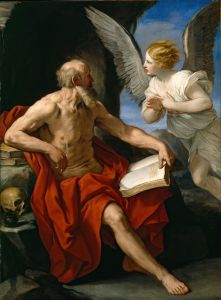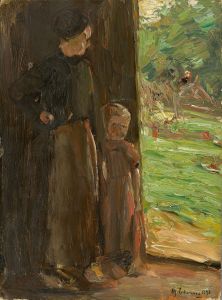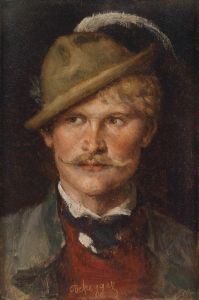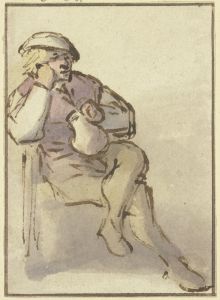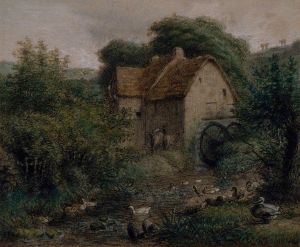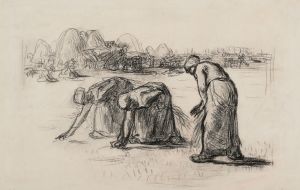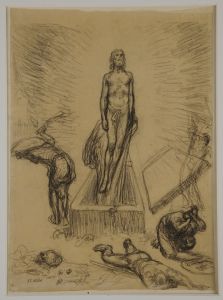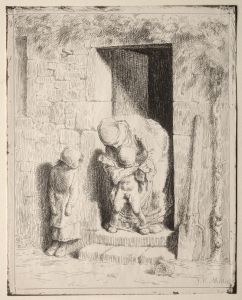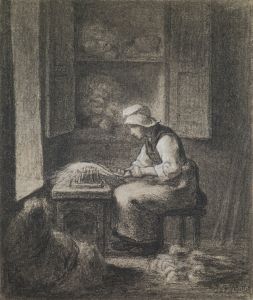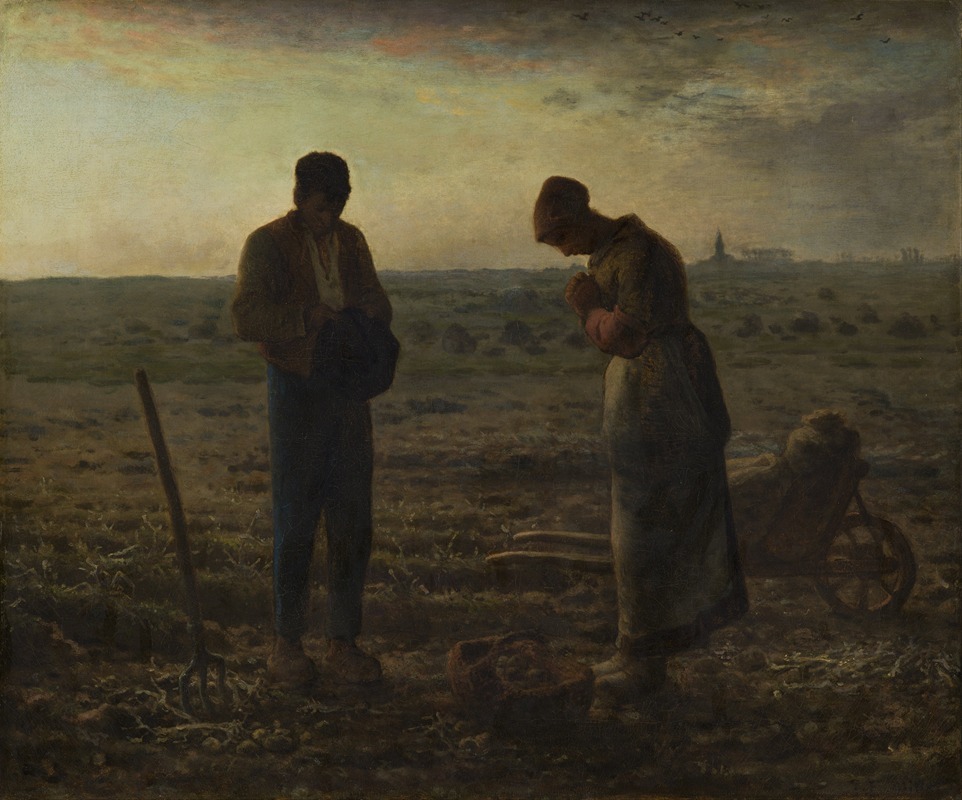
The Angelus
A hand-painted replica of Jean-François Millet’s masterpiece The Angelus, meticulously crafted by professional artists to capture the true essence of the original. Each piece is created with museum-quality canvas and rare mineral pigments, carefully painted by experienced artists with delicate brushstrokes and rich, layered colors to perfectly recreate the texture of the original artwork. Unlike machine-printed reproductions, this hand-painted version brings the painting to life, infused with the artist’s emotions and skill in every stroke. Whether for personal collection or home decoration, it instantly elevates the artistic atmosphere of any space.
"The Angelus" is an iconic painting by the French artist Jean-François Millet, completed between 1857 and 1859. This oil on canvas work is renowned for its depiction of rural life and is considered one of Millet's masterpieces. The painting measures 55.5 cm by 66 cm and is housed in the Musée d'Orsay in Paris, France.
Jean-François Millet was a prominent member of the Barbizon School, a group of painters who focused on realism and were known for their depictions of rural scenes and landscapes. Millet's work often highlighted the dignity and simplicity of peasant life, and "The Angelus" is a quintessential example of this theme.
The painting portrays two peasants, a man and a woman, standing in a field during sunset. They have paused their work to bow their heads in prayer, as the church bell tolls the Angelus, a traditional Catholic prayer recited three times a day. The figures are shown with a wheelbarrow and a basket of potatoes, emphasizing their connection to the land and their labor. The horizon is low, and the expansive sky dominates the composition, adding a sense of solemnity and tranquility to the scene.
Millet's use of light and color in "The Angelus" is subtle yet effective. The warm tones of the setting sun cast a gentle glow over the figures and the landscape, creating a serene and contemplative atmosphere. The simplicity of the composition, combined with the profound sense of devotion and humility, has contributed to the painting's enduring appeal.
"The Angelus" was initially commissioned by a Belgian collector, but it gained widespread popularity after being exhibited in Paris. The painting's fame grew significantly in the late 19th and early 20th centuries, partly due to its reproduction in prints and engravings. It resonated with audiences for its portrayal of piety and the timeless rhythm of rural life.
The painting has also been the subject of various interpretations and analyses. Some art historians view it as a reflection of Millet's own religious beliefs and his respect for the peasant class. Others see it as a commentary on the social and economic changes occurring in France during the 19th century, as industrialization began to alter traditional rural lifestyles.
"The Angelus" has influenced numerous artists and writers over the years. Salvador Dalí, the surrealist painter, was particularly fascinated by the work and created several pieces inspired by it. Dalí's interpretations often imbued the original scene with a sense of mystery and psychological depth, showcasing the painting's ability to evoke diverse emotional responses.
Overall, "The Angelus" remains a significant work in the history of art, celebrated for its poignant depiction of rural life and its exploration of themes such as faith, labor, and the passage of time. Jean-François Millet's masterful portrayal of these universal human experiences continues to resonate with viewers, making "The Angelus" a timeless piece that transcends its historical context.





